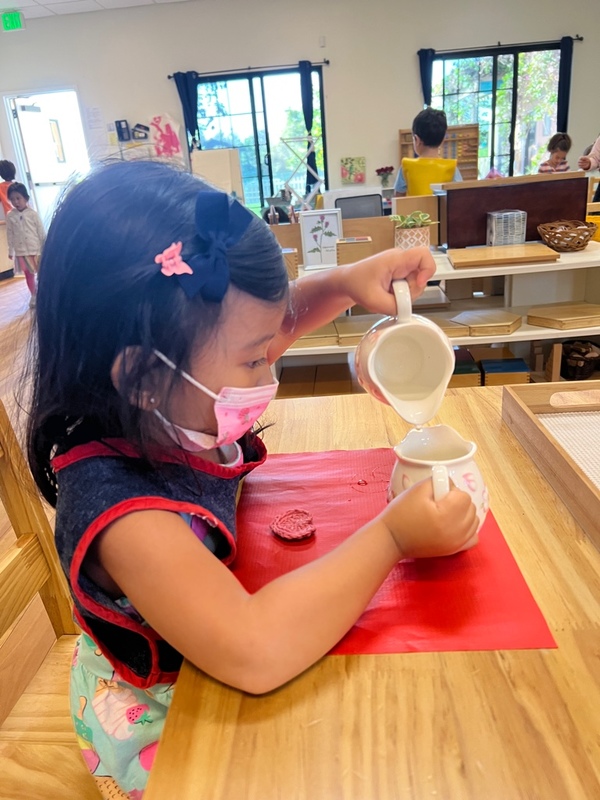(858) 759-0631
Montessori toddler teachers focus on teaching kids the responsibility to become independent learners by letting children DIY--doing it themselves!
The Montessori Method Difference
In a Montessori setting, when you give children freedom and guidance, they will find inner discipline--simply by giving them the freedom to make mistakes and choices.
When they make the right choice, they’ve learned how to build self-discipline.
How? Students are empowered by teachers to take that responsibility.
Step One: Teaching the Lesson
In a Montessori toddler setting, first students learn a lesson.
For example, teachers show:
- how to carry a watering can
- how to fill it
- how not to make it overflow
- how to slowly walk to the plant; and,
- how to water the plant.
After the child sees the teacher do it, then the teacher lets the child do it all by himself or herself.
Step Two: No Interference
Teachers and parents just watch the child apply the lesson.
Importantly, there is no parental commentary. The reason: If a child hears an adult telling him or her how they or could fail this task, they may get frustrated or rebellious or even worse: believe they aren't capable and give up.
Step Three: Making Mistakes and Learning from Them
Perhaps they will make a mistake—like spilling the water. If so, the child will make a necessary correction—like using two hands next time. The result: success—all by themselves!
This type of two-year-old lesson--letting kids do it themselves--gives Montessori toddlers the freedom to make the right choice. If they err, teachers and parents have created success. How? Going forward, they’ll work towards refining the process without a mistake.
Step Four: Choices and Consequences
If a child can’t hold the water container; or, they’re not interested and purposefully let the water flow out, here’s where responsibility comes to the fore.
A Montessori teacher will say: ‘Let’s try this another time. When you show control, we can share this privilege in the garden.’ Here, the teacher has created a motivator. The child then says to himself, ‘OK, next time, I’ll show them that I’m capable of doing it. Then, I can be in the garden instead of the classroom during this task.’
“In other words, it’s the child’s decision and success—completed without parental interference.
Summary
Children find themselves via freedom. If they use it correctly, they realize that it’s a privilege. Thus, the child shows adults that it’s in them to find a way to do things themselves and be responsible for that action. That’s teaching kids responsibility via freedom through the Montessori Method.

